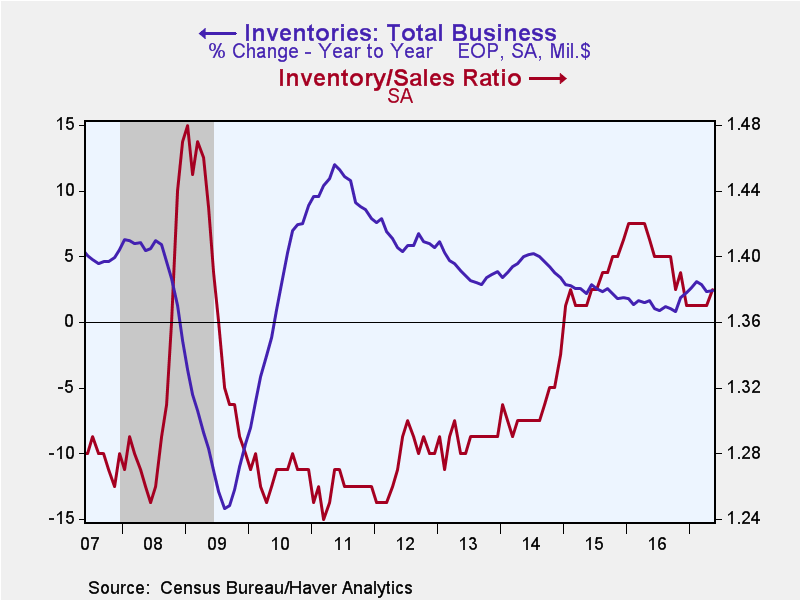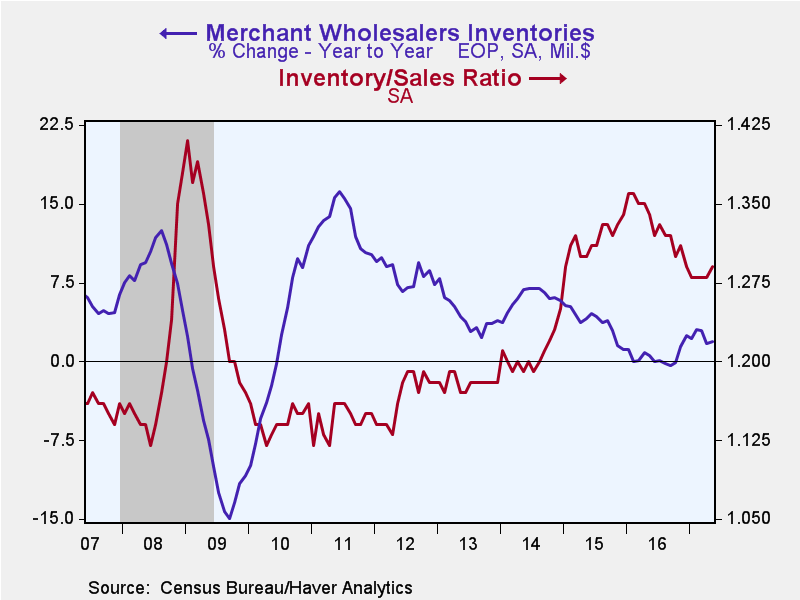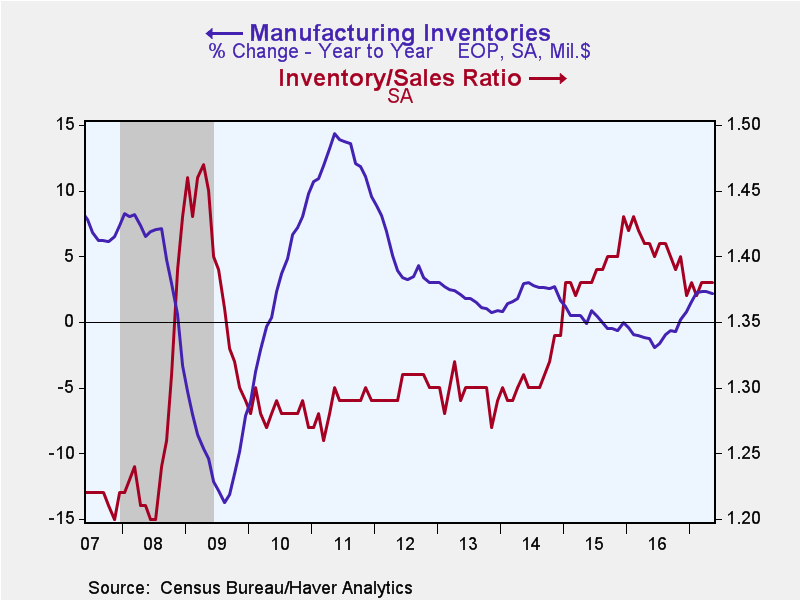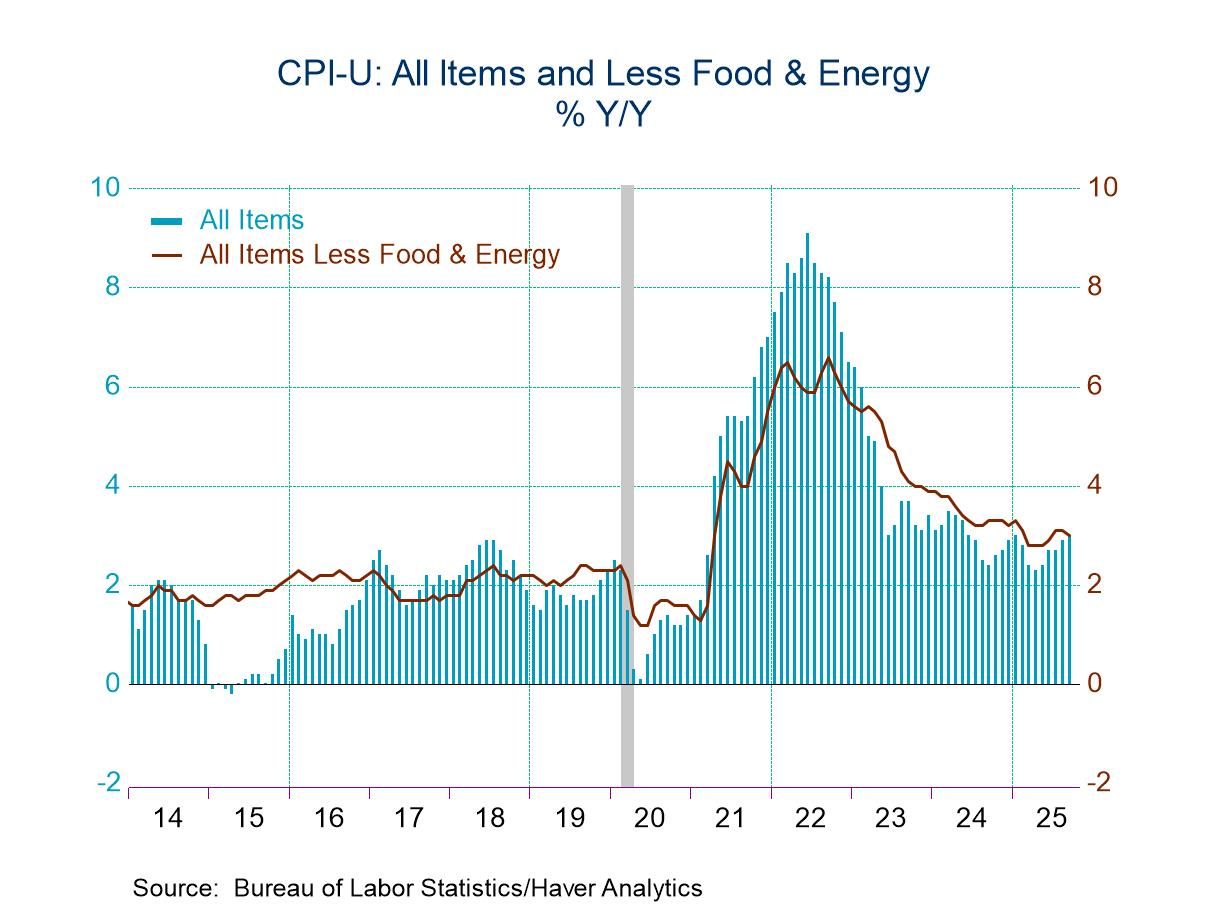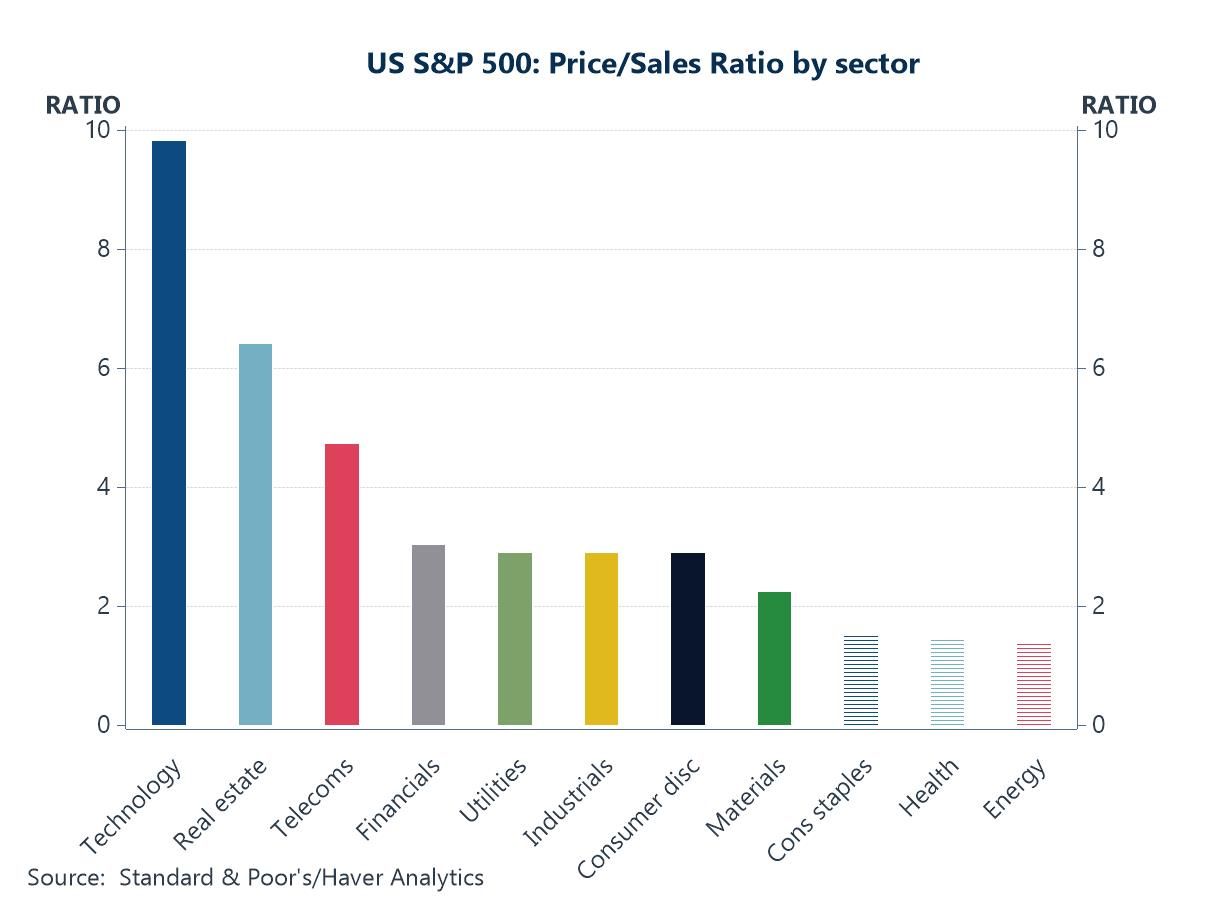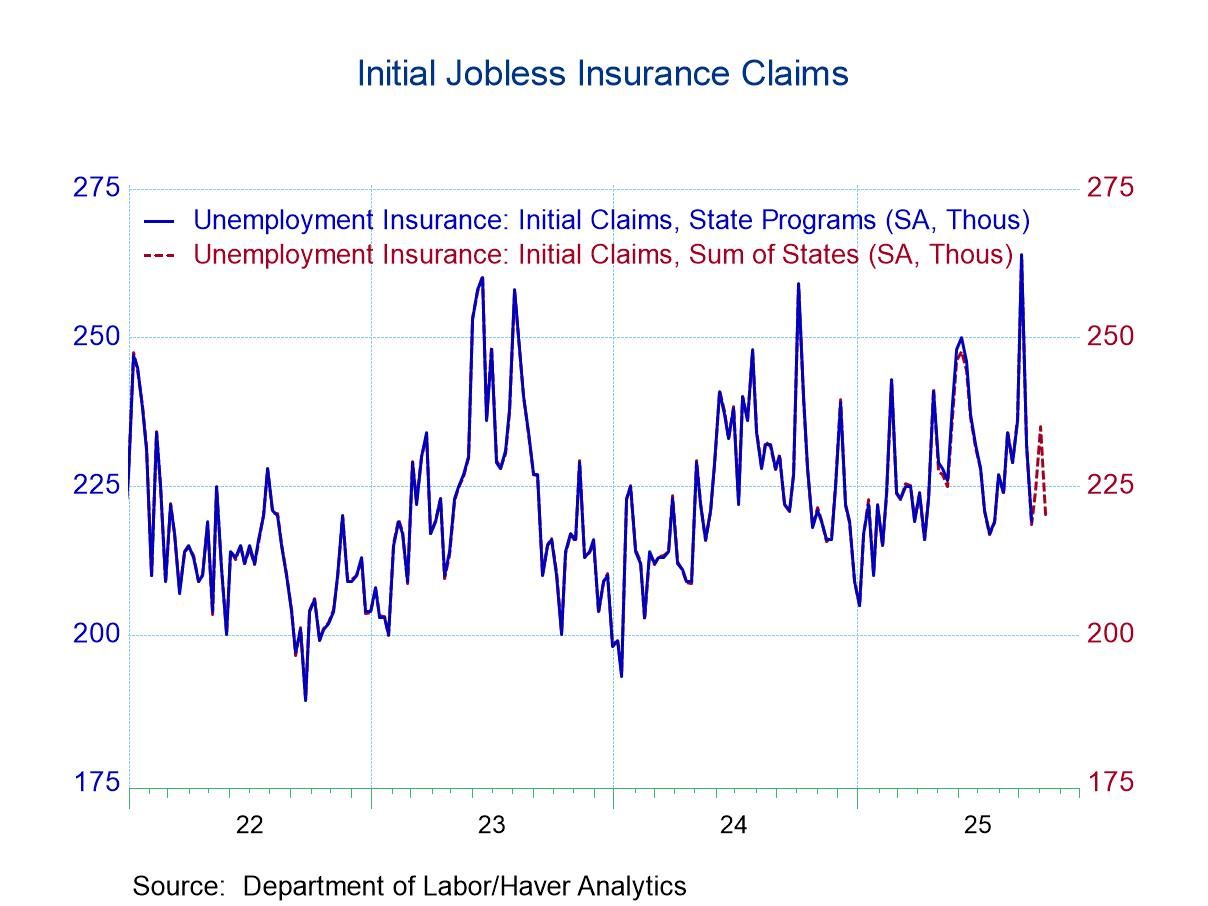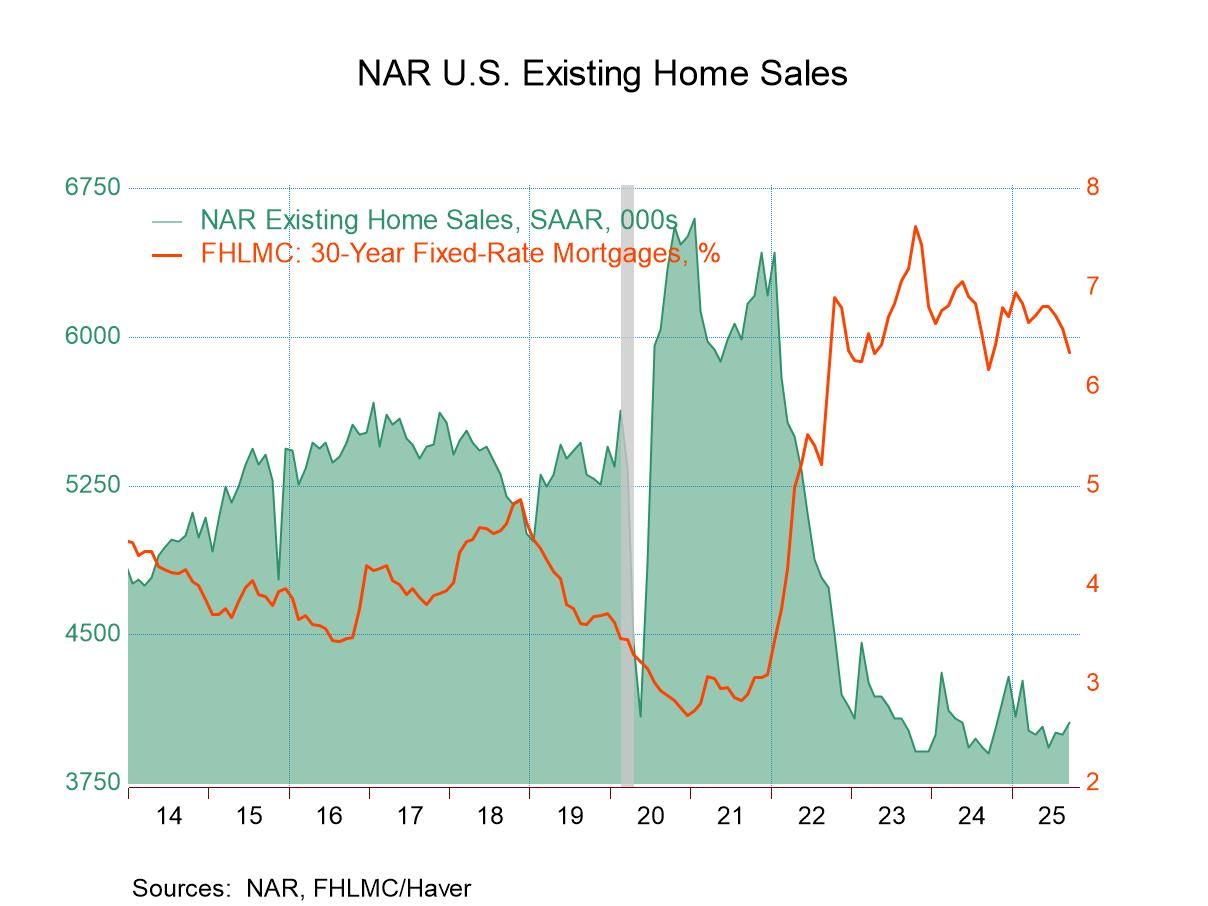 Global| Jul 14 2017
Global| Jul 14 2017U.S. Business Inventories Accumulate as Sales Decline
by:Tom Moeller
|in:Economy in Brief
Summary
Total business inventories increased 0.3% in May (2.4% y/y), only the second rise in the last seven months. Retail inventories gained 0.5% (3.1% y/y) and more than recouped April's decline. Motor vehicle & parts inventories jumped [...]
Total business inventories increased 0.3% in May (2.4% y/y), only the second rise in the last seven months. Retail inventories gained 0.5% (3.1% y/y) and more than recouped April's decline. Motor vehicle & parts inventories jumped 1.1% (7.5% y/y). Retail inventories excluding autos rose 0.2% (0.8% y/y). Furniture inventories increased 0.7% (0.2% y/y). General merchandise inventories declined 0.8% (-3.8% y/y) and apparel inventories eased 0.1% (-0.8% y/y). Wholesalers' inventories gained 0.4% (1.9% y/y), but factory inventories eased 0.1% (+2.2% y/y).
Business sales declined 0.2% (+5.1% y/y), the second decline in three months. Retail sales eased 0.1% (+4.2% y/y), while excluding autos, sales fell 0.4%. Wholesale sector sales declined 0.5% (+6.2% y//y), down for the third straight month. Factory sector shipments ticked 0.1% higher (4.9% y/y).
The business sector inventory-to-sales ratio notched up to 1.38, the highest level in six months. The retail I/S ratio rose to 1.48, but has been trending near that level for a year. The 1.24 ratio excluding autos was down from 1.29 early last year. The auto sector ratio remained elevated at 2.26. The furniture sector ratio of 1.55 was down sharply versus 2010, nearly the lowest level of the economic expansion. The general merchandise ratio of 1.40 was down following a back-up late in 2015; it has been trending down sharply since the mid-1990s.The apparel sector's I/S ratio of 2.45 was up sharply since early-2012. The wholesale sector ratio of 1.29 was down sharply versus the early-2016 high and the factory sector ratio has been moving sideways since late last year.
The manufacturing and trade data are in Haver's USECON database.
| Manufacturing & Trade | May | Apr | Mar | May Y/Y | 2016 | 2015 | 2014 |
|---|---|---|---|---|---|---|---|
| Business Inventories (% chg) | 0.3 | -0.2 | 0.2 | 2.4 | 2.3 | 1.8 | 3.4 |
| Retail | 0.5 | -0.2 | 0.2 | 3.1 | 3.8 | 4.7 | 3.0 |
| Retail excl. Motor Vehicles | 0.2 | -0.2 | 0.1 | 0.8 | 1.8 | 3.8 | 2.6 |
| Merchant Wholesalers | 0.4 | -0.4 | 0.1 | 1.9 | 2.5 | 1.2 | 5.8 |
| Manufacturing | -0.1 | 0.0 | 0.2 | 2.4 | 0.8 | -0.1 | 1.6 |
| Business Sales (% chg) | |||||||
| Total | -0.2 | 0.0 | -0.1 | 5.1 | -0.1 | -3.2 | 2.8 |
| Retail | -0.1 | 0.4 | 0.1 | 4.2 | 2.7 | 1.9 | 4.0 |
| Retail excl. Motor Vehicles | -0.4 | 0.4 | 0.3 | 3.8 | 2.3 | 0.4 | 3.3 |
| Merchant Wholesalers | -0.5 | -0.3 | -0.2 | 6.2 | -0.5 | -4.9 | 3.6 |
| Manufacturing | 0.1 | 0.0 | -0.2 | 4.9 | -2.0 | -5.8 | 1.3 |
| I/S Ratio | |||||||
| Total | 1.38 | 1.37 | 1.37 | 1.41 | 1.40 | 1.38 | 1.31 |
| Retail | 1.48 | 1.47 | 1.48 | 1.49 | 1.48 | 1.45 | 1.43 |
| Retail excl. Motor Vehicles | 1.24 | 1.23 | 1.24 | 1.28 | 1.27 | 1.26 | 1.23 |
| Merchant Wholesalers | 1.29 | 1.28 | 1.28 | 1.34 | 1.33 | 1.32 | 1.21 |
| Manufacturing | 1.38 | 1.38 | 1.38 | 1.41 | 1.41 | 1.39 | 1.31 |
Tom Moeller
AuthorMore in Author Profile »Prior to joining Haver Analytics in 2000, Mr. Moeller worked as the Economist at Chancellor Capital Management from 1985 to 1999. There, he developed comprehensive economic forecasts and interpreted economic data for equity and fixed income portfolio managers. Also at Chancellor, Mr. Moeller worked as an equity analyst and was responsible for researching and rating companies in the economically sensitive automobile and housing industries for investment in Chancellor’s equity portfolio. Prior to joining Chancellor, Mr. Moeller was an Economist at Citibank from 1979 to 1984. He also analyzed pricing behavior in the metals industry for the Council on Wage and Price Stability in Washington, D.C. In 1999, Mr. Moeller received the award for most accurate forecast from the Forecasters' Club of New York. From 1990 to 1992 he was President of the New York Association for Business Economists. Mr. Moeller earned an M.B.A. in Finance from Fordham University, where he graduated in 1987. He holds a Bachelor of Arts in Economics from George Washington University.


